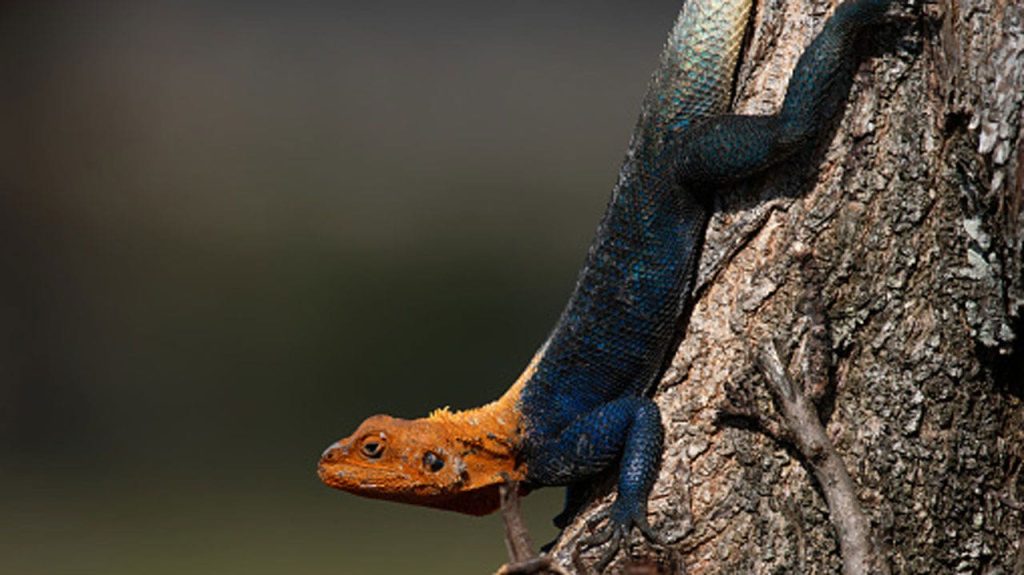The invasive Peter’s rock agama lizard from Africa has made its way to Central Florida, with residents of West Melbourne noticing the large red-headed reptiles moving up the coast. The species was first documented in Florida in 1976 and has spread to 20 counties, causing concerns among wildlife officials. The lizards’ large size and high population densities can impact other native species by preying on them and competing for resources. They feed mostly on insects but have also been seen eating snakes, lizards, birds, and small mammals.
The Peter’s rock agama lizard is native to tropical, sub-Saharan Africa and can grow up to 12 inches for males and 4 to 5 inches for females. The population in Florida is believed to have originated from released or escaped pet lizards, highlighting the potential consequences of introducing non-native species to new environments. While the impact of these lizards on the local ecosystem is still being studied, the Florida Fish and Wildlife Conservation Commission (FWC) acknowledges that eradicating established populations is likely not feasible.
Ken Gioeli, a natural resources extension agent with the University of Florida, has referred to the lizards’ movement up the coast as “the invasion front,” indicating the continuous spread of the species in the state. The FWC has expressed concerns about the potential environmental impacts of the invasion, as the lizards can disrupt the balance of the local ecosystem by preying on native species and competing with them for food and habitat. Despite efforts to control the population, the FWC has indicated that eradicating established populations may not be feasible.
Residents in West Melbourne and other parts of Central Florida have taken notice of the Peter’s rock agama lizards’ presence, with their unique red-headed appearance standing out among other local wildlife. Reports of these lizards consuming various small animals and insects raise concerns about their potential impact on the local food chain and biodiversity. While efforts may be made to manage the population of these invasive lizards, the FWC recognizes that fully eradicating them from Florida may not be a feasible solution.
The spread of the Peter’s rock agama lizards in Florida underscores the challenges posed by invasive species and the importance of preventing their introduction into new environments. As wildlife officials continue to monitor and study the impact of these lizards on the local ecosystem, concerns about their potential effects on native species and habitats remain. The presence of these exotic lizards serves as a reminder of the need for responsible pet ownership and prevention of unintentional releases or escapes that could have lasting consequences on the environment.


